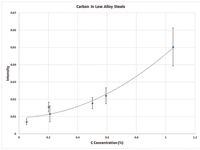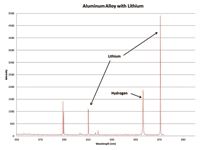Handheld Laser-Induced Breakdown Spectrometer for In-field Elemental Analysis
Application Notebook
SciAps has developed a handheld analyzer based on laser induced breakdown spectroscopy (LIBS).
SciAps has developed a handheld analyzer based on laser induced breakdown spectroscopy (LIBS). The analyzer possesses a patent pending high resolution (<100 pm) spectrometer that spans 184 nm to 675 nm, with the ability to reach as low as 175 nm. The analyzer is therefore configurable to measure any groups of elements in the periodic table. The analyzer contains a renewable, high efficiency argon purge for measurements in the deep UV (<200 nm) and improved limits of detection (LOD) for all elements, if needed for the application.
We have miniaturized LIBS technology. Our technique utilizes an eye-safe laser source operating at 1534 nm rather than the more standard 1064 nm. It operates at 5 mJ and is pulsed at 10 Hz. This choice yields a Class 1 designation greatly minimizing regulatory requirements while also providing greatly improved LODs compared to micro-LIBS. The laser light is focused down to a <50 um spot to produce a bright plasma at the sample surface. The spectrometer is gated to reject the large amount of background radiation emitted in the early stage of the plasma. As the plasma cools, emissions become dominated by electrons returning to discrete states in the various atoms, thus yielding photons with characteristic energies (that is, colors) that are used to identify and quantity specific elements. The region around the plasma is (optionally) argon-purged with a novel technique that allows a full day operation using a replaceable argon cartridge located in the instrument handle (patent pending). The argon purge combined with spectrometer gating improves the limits of detection by a factor of 10–50× depending on the element. Elements in the deep UV such as carbon (193 nm) benefit the most.
Application Examples
Two examples of the breadth of elemental analysis with the analyzer are shown in Figures 1 and 2. Figure 1 shows the analysis of several carbon steels. The intensity ratio of carbon to iron is plotted versus carbon content, demonstrating good repeatability beyond 1%. The limit of detection (LOD) for carbon is 400 ppm. Future improvements in the laser power and optics are expected to reduce the LOD to <200 ppm, allowing for the discrimination of L-grade versus standard grade stainless steels, as one example.

Figure 1: Analysis of several carbon steel reference materials with carbon concentration ranging from 0.05% up to 1.05%. Intensity ratios (carbon line/iron line) are plotted versus carbon %.
Figure 2 demonstrates the wide wavelength range of the small spectrometer. An aluminum alloy containing 1.5% Li was analyzed. Two peaks are shown one at 610.3 nm and a more intense line at 670.8 nm. For Li concentrations <0.05%, the more intense line at 670.8 nm is used. Even elemental hydrogen can be measured, as shown by the line at 656 nm. Thus in the miniaturized spectrometer, wavelengths as far apart as carbon at 193 nm and Li at 670.8 nm are measured.

Figure 2: Spectrum of 1% lithium in an aluminum alloy showing lithium emissions at 610.3 nm and 670.7 nm, and hydrogen emission at 656 nm. Hydrogen concentration is not known.
In summary, a novel handheld LIBS spectrometer has been developed to identify and quantify elemental concentrations in a variety of sample types. The combination of a) a wide range, high resolution spectrometer, b) a gated and argon purged spectrometer, and c) a high powered, lower rep rate laser yields a tool to quantitatively measure any element in the periodic table with a handheld device.

SciAps, Inc.
2 Constitution Way, Woburn, MA 01801
tel. (339) 927-9455
Website: www.sciaps.com

Thermo Fisher Scientists Highlight the Latest Advances in Process Monitoring with Raman Spectroscopy
April 1st 2025In this exclusive Spectroscopy interview, John Richmond and Tom Dearing of Thermo Fisher Scientific discuss the company’s Raman technology and the latest trends for process monitoring across various applications.
A Seamless Trace Elemental Analysis Prescription for Quality Pharmaceuticals
March 31st 2025Quality assurance and quality control (QA/QC) are essential in pharmaceutical manufacturing to ensure compliance with standards like United States Pharmacopoeia <232> and ICH Q3D, as well as FDA regulations. Reliable and user-friendly testing solutions help QA/QC labs deliver precise trace elemental analyses while meeting throughput demands and data security requirements.